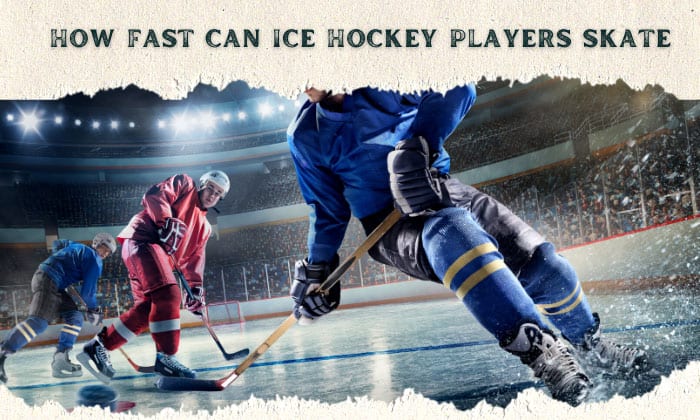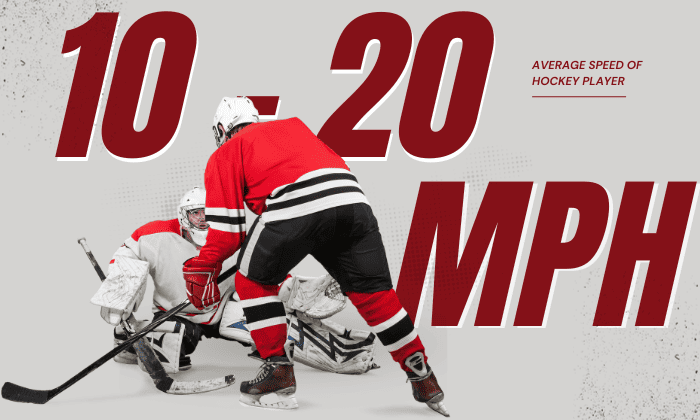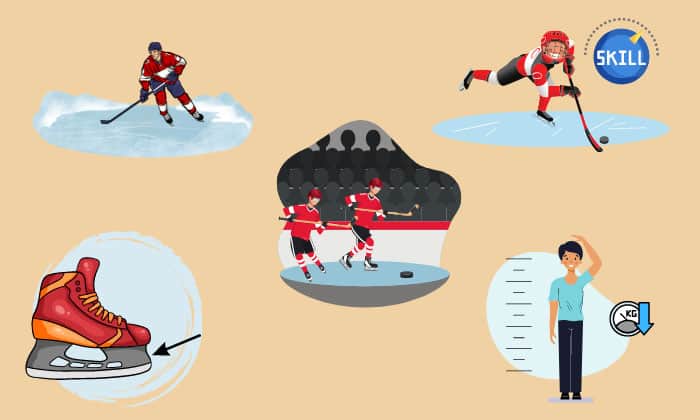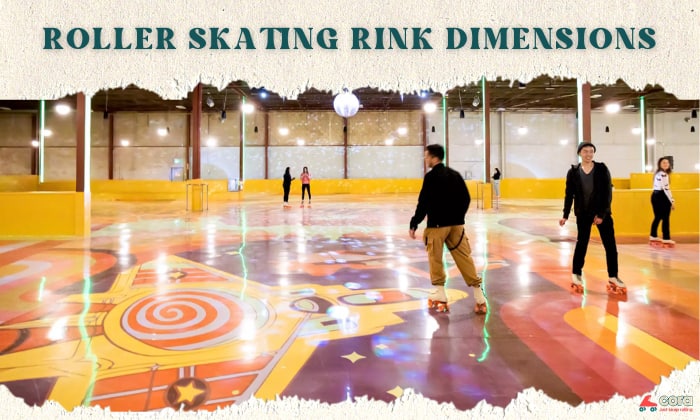Ice hockey is a sport that relies on speed and agility. Players need to be able to move quickly and switch directions or stop on the dime in order to stay in the game.
So, how fast can ice hockey players skate? The average range is between 10 and 20 mph (or 16 and 32 kph).
The specific speed can be affected by a few factors, such as the ice and the skater’s physique. You can discover the rest of the details in the paragraphs below. Read on!
Page Contents
How Fast Can an Ice Hockey Player Skate?
The average ice skating speed of a hockey player is between 10 and 20 miles per hour. This is equivalent to 16 to over 30kph.
In the realm of hockey, one of the fastest ice skaters on record is Connor McDavid, who is among the most famous NHL players. At one point during a game, he reached a speed of 24.9 mph!
Besides the numbers, his hockey peers recognize McDavid as the fastest player. A 2017-2018 poll found that 81% of all players in the league believed that McDavid was the king of speed. Here are the rest of the findings:
| Player | Position | Nationality | Votes (In Percent) |
| Michael Grabner | Left & Right Wing | Austrian | 3.6% |
| Nick Leddy | Defense | American | 2.4% |
| Dylan Larkin | Center | American | 2.2% |
| Chris Kreider | Forward | American | 1.6% |
But McDavid is not the only name being brought up in the game of speed. There are many other players who have impressive records. Here are some for your reference:
| Player | Position | Key Achievements |
| Mike Gartner | Right Wing | Was the NHL Fastest Skater in 1993 and 1996 |
| Sami Kapanen | Left Wing | Was the NHL Fastest Skater in 2001 and 2002 |
| Sergei Fedorov | Center | Was the NHL Fastest Skater in 1992 |
| Yvan Cournoyer | Forward | Won the Stanley Cup 10 times |
| Paul Coffey | Defenseman | Won the Stanley Cup 4 times and was Norris winner twice |
Factors That Affect How Fast an Ice Hockey Player Skates
Factor #1: The Ice
Icy surfaces can be soft or hard. The former tends to be less smooth, so friction can prevent skaters from skidding through as fast. Moreover, it is easier for skaters’ blades to cut into the ice, encountering friction.
In contrast, the latter is trickier for blade digging, allowing skaters to glide at higher speeds. Whether the ice is soft or hard depends on other factors, like temperature.
Factor #2: The Skates’ Blades
Hockey ice blades are either short or long, and they are not that way just for the sake of it. Their lengths have a direct impact on how fast players can skate.
Longer blades offer higher speeds. This is because they have more contact area with the ice, which decreases the pressure that, in turn, lessens friction. As such, players deal with less resistance and can skate quicker.
Moreover, the longer blade profile lengthens the players’ contact. This lets them make longer pushes accompanied by more energy created over some time, overcoming resistance.
Factor #3: The Skater’s Height
If you read any blog posts or watch tutorials on ice skating, you will hear people emphasizing the importance of lowering the body’s center of gravity. It is what makes balancing possible.
If you are on the shorter side, your center of gravity is naturally lower. Hence, you will less likely to be off balance and compelled to slow down as a result.
However, if you have practiced enough to be completely comfortable balancing on blades, being tall should not stop you from skating fast.
Factor #4: The Skater’s Weight
A player’s weight can also impact his or her speed on the ice. Heavier players will find that their skates dig deeper into the ice when they move, and this generates friction that slows them down.
But that does not mean you cannot skate quickly if you are on the heavy side. You can offset the influence of your weight with your skates’ sharpening, for instance.
Factor #5: The Skater’s Skills
You are more likely to pull off top speeds if you are a skilled skater. This is because you just have to keep your mind on moving quickly and not on other aspects of skating, like staying balanced.
Plus, if you are on the advanced levels, you will know more techniques and be able to apply them to ramp up the speed.
Frequently Asked Questions (FAQs)
What is the fastest hockey shot?
In the history of NHL, the fastest shot belongs to Victor Hedman, who set a record of 108.8 mph. If we’re going by rumors alone, one of Bobby Hull’s slap shots reached a speed of 118 mph.
Who is the fastest hockey player ever?
Hockey Hull holds this title. He was able to skate 29.7 mph, which is over 40 kph, and he clocked a 118.3 mph (190.5 kph) slapshot with his wooden stick once. It sent the entire hockey community into a frenzy and continues to be impressive today.
How fast do speed skaters skate on ice?
Speed skaters skate from 30 mph to over 35. Specifically where a skater is on the range depends on whether he/she is a short-track or long-track skater.
Read more: Tips for skating faster on ice.
How far does a hockey player skate in a game?
It is estimated that the average player skates a maximum of 5 miles during an hour-long game. However, many factors can affect this, including the player’s position and how much time they are spending on the ice.
Conclusion
As you have read in the paragraphs above, the answer to “How fast can ice hockey players skate?” is, on average, up to 25 mph. Some demon speeds, however, can go even faster. Conner McDavid, for example, once skated at 24.9 mph.
A player’s speed can be affected by factors like the texture of the ice, the length of their blades, and their height, weight, and skills.
Hopefully, this has been interesting and informative. Feel free to bookmark this blog post to go back to it in the future. Also, please share this with other readers!

Harrison is a skating enthusiast who picked up the sport during her student exchange years in Canada. She has been a skating coach for children and teens for 3 years and now holds classes as a freelancer. Harrison entwines her experience leading skating classes in the content published on Cora to help readers fall in love with skating, just like she did.











